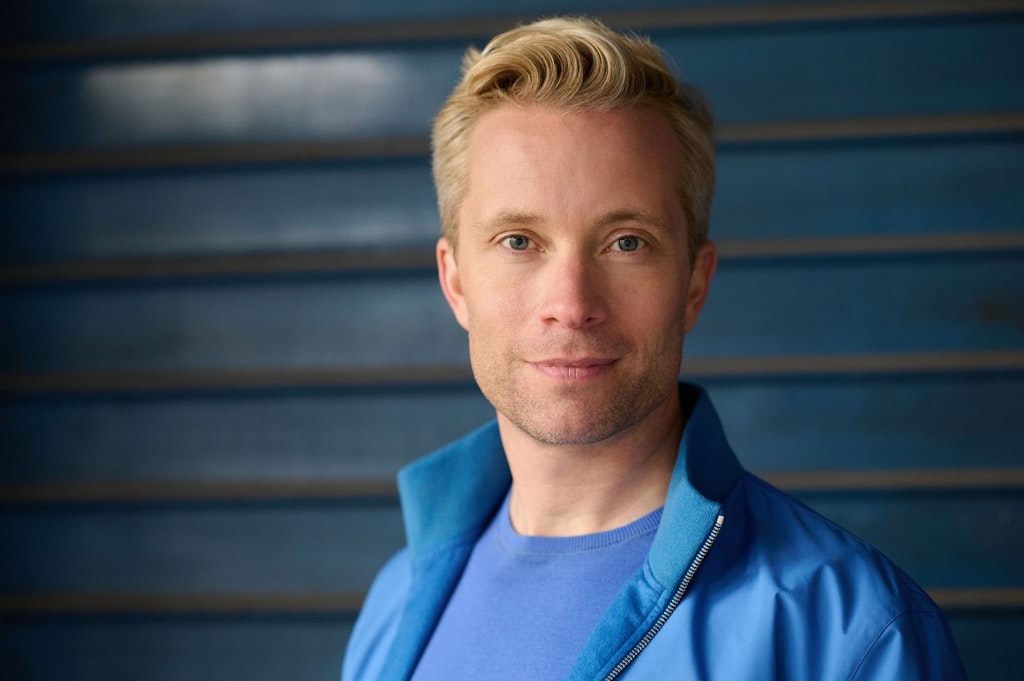Extended reality (XR) is “here to stay”, and designers must shape how society uses this new technology, a leading curator says.
Ulrich Schrauth leads the XR and Immersive Programme for the BFI London Film Festival. He has overseen a wide-ranging programme of immersive art, experiences and gaming at this year’s festival, which is underway in the capital.
Schrauth is particularly excited about mixed reality (MR), where physical and virtual experiences come together. “You have a headset on, but the way you perceive it is interactive in the best possible sense, in a space perhaps with smells, or haptic feedback,” he said.

He predicts we are only two to three years away from a tipping point where MR becomes widely-adopted across many different use cases, and starts to feel “very natural.” And Schrauth says designers will play a huge part in the future adoption of XR.
First, he says, by solving some of the challenges currently holding the technology back. While headsets are getting lighter and more ergonomic, there is still a “clunkiness,” and he also thinks user interfaces need to be improved across the board.
“It is not at the point where our smartphone is, where we can just turn it on and everything’s just working by itself,” he said.
But beyond that, Schrauth is excited to see how designers define new use cases for the technologies under the XR umbrella (which include MR and VR).
“I think it is very clear this is here to stay, but in what form?” he said. “Designers are there to shape the form, and think about how we want to use this meaningfully. How do we want audiences, or clients, to engage with this? What are the use cases that really matter?
“We need creative minds to run wild,” he added. “We need to go far beyond what people can envision in terms of design, in terms of interaction, in terms of personal use cases and artistry.”
If we don’t, others will define it for us, he warns. “We have to shape these new technologies in the way we need them, not the way the big tech companies want to shape them.”
On a practical level, Schrauth points out that XR is already being used in the design world, through collaborative tools like SketchUp.
But he says the power and possibilities of these technologies are still being understood. VR, he explains, is sometimes called “the empathy machine,” and he thinks it can help designers better understand the people they’re designing for.
In this year’s festival, Schrauth has focused on healthcare. Mammary Mountain is a piece about the lived experiences of breast cancer patients, which encourages people to think about trauma in a new way.
Soul Paint is an immersive journey, narrated by actor Rosario Dawson, in which audiences can “explore and express their emotions through body mapping, 3D drawing and movement.”
“There is an absolute beauty in how we can perceive our world differently through these lenses,” Schrauth said.

For designers, who often have to step into other people’s shoes when considering a new project, the potential is huge.
And his advice for those not yet well-versed in this space is to just jump in – “Be curious, don’t be afraid, play around with a few things.”
Schrauth believes the strength of this technology lies in its inherently collaborative nature. “I think this is what makes this space so interesting – the creativity that sparks from very different genres. It’s not like one person sitting at home and painting a picture – you need so many different people, and the work benefits so much from that.”
LFF Expanded is presented across multiple central London venues, BFI IMAX, the Southbank Centre’s Undercroft, Level 1, Queen Elizabeth Hall and Outernet London, until 27 October.
- Design disciplines in this article












One response to “Designers “must shape” the future of XR technology”
AR/XR will at some point change everything. Providing a backdrop for interacting with otherwise-unseen virtual elements will be something future architects, planners and space designers will have to think about for urban spaces.
Existing platform holders have it the wrong way around though. The world is full of IOT sensors in an ever-growing number of places. AR hardware will allow everyday citizens to parse this data using an open platform. Using data-pull the information will be geolocated, requiring physical presence to access. It this way we return to the foundations of the original web.
Signage becomes personalised to the user. Local businesses can host their own roadside ads for free. Artists can create installations which require no bespoke hardware. And unplugging will be as simple as removing some glasses.
The idea of it as a more centralised data-push exercise is another short-sighted exercise allowing faceless internet corporations another avenue of data collection. You think browser data collection is bad; imagine them knowing everything you have looked at via non-invasive basic object recognition.